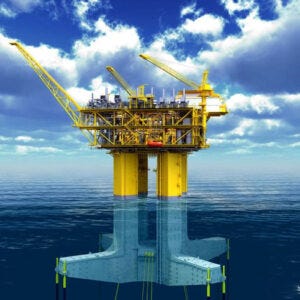The fiber optic gyroscope is an instrument that can accurately determine the position of a moving object. It is an inertial navigation instrument widely used in modern aviation, navigation, aerospace, and defense industries. The fiber optic gyroscope is a sensitive element based on the optical fiber coil, and the light emitted by the laser diode propagates along with the optical fiber in two directions. The difference in light propagation path determines the angular displacement of the sensitive element. Compared with traditional mechanical gyroscopes, fiber optic gyroscopes have the advantages of all-solid-state, no rotating parts and friction parts, long life, large dynamic range, instant start, simple structure, small size, and lightweight. Compared with laser gyroscopes, fiber optic gyroscopes do not have the problem of blocking and do not need to precisely process the optical path from the quartz block, and the cost is relatively low.

The realization of the fiber optic gyroscope is mainly based on the Segnik theory: when the beam travels in a circular channel if the circular channel itself has a rotation speed, then the time required for the light to travel along the channel’s rotation direction is longer than that along the channel. It takes more time to rotate in the opposite direction. That is to say, when the optical loop rotates, in different traveling directions, the optical path of the optical loop will change relative to the optical path of the loop when the loop is stationary. Using this change in the optical path to detect the phase difference between the two optical paths or the change in interference fringes, the rotational angular velocity of the optical path can be measured. This is the working principle of the fiber optic gyroscope. “The characteristics of fiber optic gyroscopes: low energy consumption, long lifespan, and strong reliability. It is also the characteristics of fiber optic gyroscopes that determine it has always been dominant in strategic gyroscopes. This is also an important reason why ERICCO has been committed to promoting the development of FOG.” The CEO of ERICCO said.
The application of fiber optic gyroscope is very wide:
1. Navigational applications Compass is important navigation equipment for ships, mainly including the magnetic compass and gyrocompass. With the development of fiber optic gyroscope technology and the improvement of commercialization, fiber optic gyroscopes have become a new member of marine navigation equipment and are used in commercial and military ships and marine equipment. The fiber optic gyroscope compass based on strapdown inertial navigation system has its rotation axis corresponding to the three axes of the ship’s coordinate system. It can not only be used as a high-precision heading information source to realize automatic north finding and pointing, but also can be obtained Reliable data such as the rate of heading rotation, the angle of roll and pitch, and the rate of rotation of the heading further promote the automated development of ships, ensuring the ship’s maneuvering effects and ensuring the safety of navigation.

2. Aerospace and space applications In aerospace and space applications, high-precision interferometric fiber optic gyroscopes are generally used. IFOG is the strapdown inertial navigation system of the main inertial element, which can provide the aircraft with three-dimensional angular velocity, position, angle of attack, and sideslip angle, and realize the tracking and measurement of a rocket launch. It can also be used for space vehicle stabilization, photography/surveying, mapping, attitude measurement control, motion compensation, EO/FLIR stabilization, navigation and flight control, etc. Among them, the high-precision, high-reliability fiber optic gyroscope, and GPS combined attitude determination has become a spacecraft at home and abroad The typical configuration of the posture system. Like ERICCO’s ER-FOG851, is designed with the concept of traditional fiber optic gyroscope and adopts matured fiber optic gyroscope manufacturing technology. It owns characteristics of small volume, lightweight, low power consumption, fast start-up, simple operation and convenient to use, etc.
3. Military applications The fiber optic gyroscope has a wide range of military applications due to its superiority in angular rate and acceleration measurement and its significant advantages in dynamic range, sensitivity, and reliability. It can be used for positioning, orientation, and navigation of tanks, submarines, self-propelled artillery, and armored assault vehicles; when satellite navigation is in strong electronic interference and cannot obtain accurate information, fiber optic gyros can be used to ensure autonomous navigation, precise guidance and accurate hitting of the target. At the same time, the FOG component is also an important part of the aviation fire control system, which can be used to stabilize the sightline and firing line of weapon systems such as armed helicopters, ensuring that the weapon can search, aim, track and shoot in motion. In addition, the fiber optic gyroscope is also the only effective navigation technology underwater, which can be used for positioning, orientation, and navigation of submarines.

4. Civilian applications In the civil field, it mainly focuses on the application of low- and medium-precision fiber optic gyroscopes. The main applications are automatic navigation, positioning and orientation of ground vehicles, vehicle control; attitude control of agricultural aircraft, sowing and spraying pesticides; in underground engineering maintenance, looking for damage Positioning tools and rescue tools for the position of power lines, pipelines and communication optical (electric) cables; used for geodetic surveying, mineral exploration, petroleum exploration, oil drilling steering, tunnel construction, etc. positioning and path survey, and the use of optical fiber gyro rotation angle And linear displacement to achieve dam inclination measurement and so on. Due to its high cost, its use still has great limitations. Beixun has developed cost-effective fiber optic gyroscope products in response to this problem, which has also promoted the rapid development of my country’s high-precision industry.
Ericco is an industry leader with rich product experience in the field of optical fiber gyroscopes. If you want more details about our products, you can log in to https://www.ericcointernational.com/.
FOG North Seeker
MEMS North Seeker
Land Positioning and Orientation System
mining north finder
mining north seeker
MEMS Inertial navigation system
inertial survey system
integrated navigation system
Attitude Heading Reference System (AHRS)
gyro theodolite
digital compass
electronic compass
tilt sensor
inclination sensor










.jpg)
